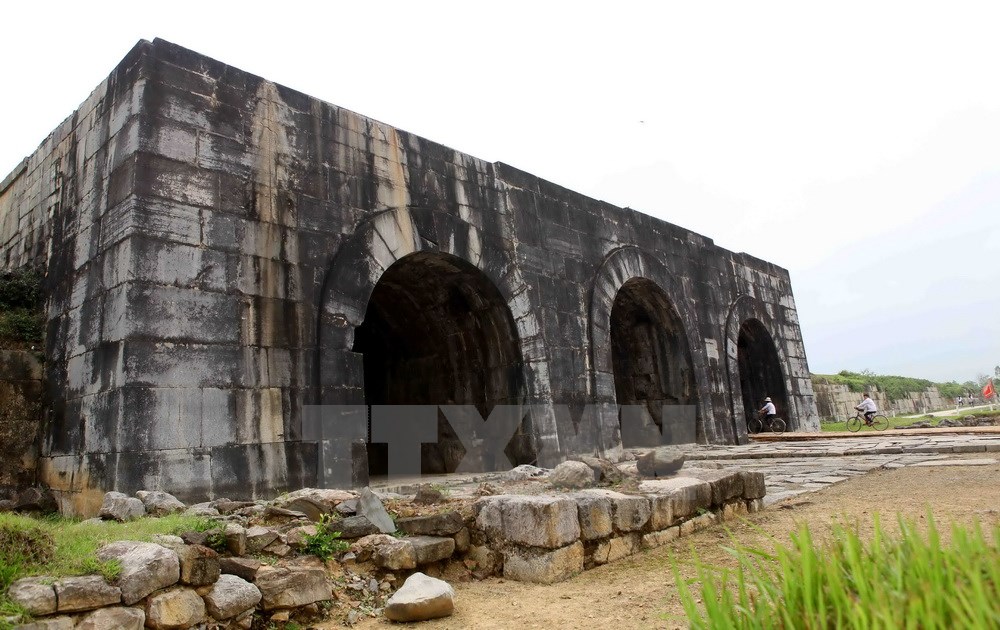Scientists and local authorities in central Thanh Hóa Province have conducted surveys and held a conference to discuss the damage to Hồ Citadel, online news Dân Trí reported. The damage occurred due to the recent storm that struck the region.

Previously, according to the judgement of Thanh Hóa Province’s authority, the 600-year-old citadel, which was recognised as a World Cultural Heritage by UNESCO in 2011, saw its wall deteriorating due to natural influences over the years.
Besides this, the impact of the tenth storm that hit the region in September caused severe erosion of a part of the citadel wall that is located within Vĩnh Tiến Commune in Vĩnh Lộc District. The eroded part is estimated to be 6.9m long, and 4m high.
Following the field survey, scientists and researchers have proposed to the local authority to conduct a study of the geological structure in the area of the heritage as well as the structure of its foundation, parts of its wall, along with reinforcing parts of the wall that have been suffering from erosion or have potential to erode.
In the long term, the local authority has been asked to continue to follow the Comprehensive Plan, which was previously approved by the Prime Minister.
Thanh Hoá Province’s People’s Committee has also compiled a report on the erosion of Hồ Citadel to be submitted to the Ministry of Culture, Sports and Tourism; the Prime Minister; and relevant organisations, and requested the ministry to provide timely guidance.
The Hồ Dynasty Citadel was Việt Nam’s capital under the Hồ Dynasty (1398-1407). Located in Vĩnh Lộc District, dimensions of the citadel, which was built in 1397, are 870m by 883m.
It is the only citadel in the country built entirely of stone that has remained nearly intact throughout the nation’s history. According to experts, the structure is an outstanding example of a new style of construction for a Southeast Asian imperial city. — VNS